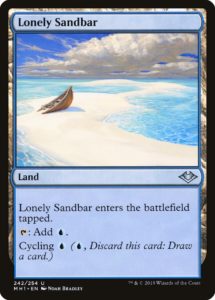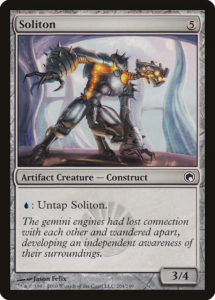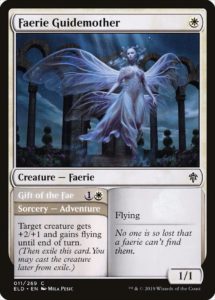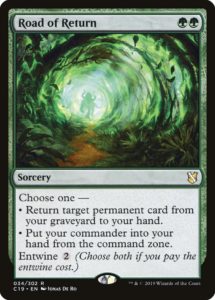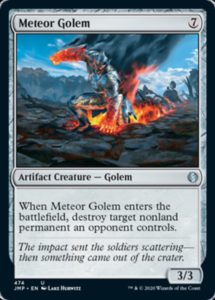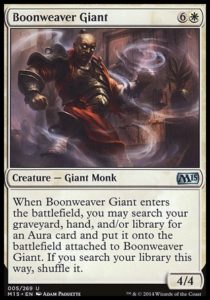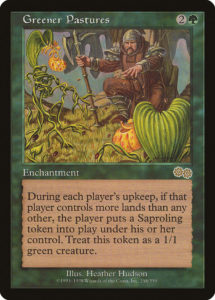Let’s talk about Jumpstart and playing Magic alone as a kid.
I first learned Magic: the Gathering in August of 1994. My family spent the summer out on Long Island. Out there, I made a friend, Zeke from Pittsburgh. Zeke showed me some awesome-looking cards from Legends and taught me how to play. When summer ended, Zeke and I returned to our respective states. My parents got me some booster packs, but outside of a few games with my well-intentioned but unamused sister, I had no one to play with. It would be three years before I made any other Magic-playing friends; so outside of August every year, I was my only opponent.
Playing against myself was easy and chaotic. I reached into my shoebox of cards (which slowly filled with time), mixed them up a bit, and scooped out two random handfuls. Without looking at the two piles, I gave each an assortment of basics, then shuffled up the two random decks and played. The games weren’t always good or even functional, and I’m pretty sure I was usually rooting for the player on the left—but hey, Magic’s still fun and it was all I had.
I hadn’t thought back to my days as a solo Magician in a long time; but, well, present circumstances make playing paper, in-person Magic impossible. I’m once again out on Long Island with my family, and with my entire collection back in New York City, I have as many cards as I did back in ’94. I suddenly have a fair amount in common with my seven year old self.
Sure, Magic Arena and Magic Online exist and I’m able to buy my own cards, but there’s nothing like sleeving up and slinging real cardboard. I ordered some booster boxes from my local game store to support them, knowing full well that I’d be cracking the product rather than playing with it. Included in the package from Twenty Sided Store was an unexpected and gracious gift—four Jumpstart boosters, exactly enough for two decks.
I smiled and opened each booster, only looking to see the names of the decks. I got Lands, Archaeology, another Archaeology, and Dinosaurs. I split them into two green-blue decks; without examining or sleeving the decks, I shuffled up. I set one deck to my left and another to my right, playing my first solo game of two player Magic in almost a quarter-century, in almost the exact same place as where I last played solo.
It was exciting not knowing what cards were in my deck and only having a vague sense of the deck’s strategy. The experience had all the uncertainty of sitting down draft a new set, but I’d skipped the draft and gone right to game one. It was a window to what Magic was like for me as a child: trying to outsmart myself, play fairly, and learn how to use my cards.
While the game was exciting at the start, it soon turned into a slog. Left drew Meteor Golem and blew up Right’s Ghalta, Primal Hunger. Right responded by Meteor Goleming Left’s Ulvenwald Hydra. Left recurred Meteor Golem with Ancestral Statue, Right used Buried Ruin and Aether Spellbomb to repaly Meteor Golem two more times. Left recurred the golem with Scholar of the Lost Trove.
When Cultivate revealed that both players had two Archaeomenders and that the game would come down to decking, I scooped it all up. The game might have been a blast when I was a kid, didn’t know better, and would’ve been tipping the scales in favor of one player; but adult me maximized value and forced the game to a standstill.
Jumpstart isn’t the ideal product for present me, but I’d have loved it as a kid. With several Jumpstart packs, I could mix and match them into lots of decks, learn playstyles, uncover synergies—keeping myself entertained without an opponent or unplayable random manabases. Adult me is comfortable with Limited, but younger me was totally overwhelmed by the concept and would’ve benefited from the on-ramp. Sure, adult me benefits from Jumpstart providing a new vehicle for needed reprints, new card deigns, and bringing new players into the fold; but those are indirect benefits compared to a set I actively want to play with.
Jumpstart may not be for me, but I’m glad that it exists and would enjoy playing it with friends who don’t play Magic seriously. The product takes a core strength of KeyForge (getting a randomized deck that you can immediately play with a friend) but does so while allowing customization and crafting a deck you enjoy (two major issues I had with KeyForge). I often worry about whether Magic has shifted away from players like me; yet Jumpstart teaches an excellent lesson that wile it’s not for me now, it absolutely would have been for younger me. Magic isn’t just expanding to new audiences, it’s finding better ways to cater to its existing audiences, including people like I once was.
While I don’t long for the days with no opponents and a tenuous grasp of the grasp, it was special to be reconnected with my younger self through our shared hobby. I don’t know if young Zach could’ve predicted that older Zach would still be playing Magic, much less making games for a living. But I’m glad that younger Zach stuck with games despite struggling to find people to play them with.
And, as always, thanks for reading.
—Zachary Barash is a New York City-based game designer and the commissioner of Team Draft League. He designs for Kingdom Death: Monster, has a Game Design MFA from the NYU Game Center, and does freelance gatame design. When the stars align, he streams Magic (but the stars align way less often than he’d like).

